Separating fish and shrimp grown together is time-consuming and requires graders or hand sorting
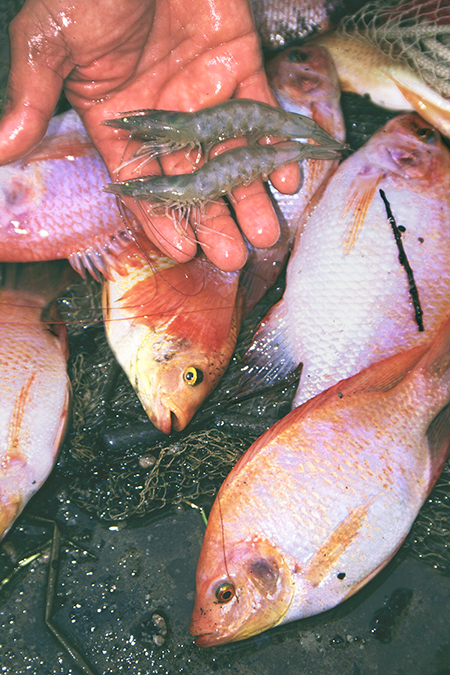
Currently, many shrimp ponds are not being operated due to problems from diseases, poor management, or other causes. Tilapia-shrimp polyculture may provide an opportunity to re-establish a profitable and more sustainable aquaculture system at these dormant facilities. Tilapia production in former shrimp ponds is already expanding in many countries, including Thailand, Mexico, Peru and Ecuador.
Although tilapia and penaeid shrimp rarely live together naturally, captive stocks can be reared together. This is based on their respective ecological niches. For example, shrimp tend to stay near the bottom substrate, while tilapia stay near the water surface. Penaeid shrimp and tilapia can both adapt to a wide range of salinities. They are also relatively tolerant to crowding and rapid changes in water quality.
Tilapia feeding behavior
In nature, tilapia are omnivores. Young tilapia graze on algal and bacteria films, scraping most hard surfaces with tongue and teeth. As they grow, they also become effective filter feeders of phytoplankton and predators of zooplankton. Larger tilapia are less-effective filter feeders, but can graze heavily on macrophytic algae and aquatic plants.
In extensive farming situations, tilapia filter feed on algae, prey on zooplankton and scrape bio-films from hard surfaces in the pond. In intensive farms, most nutrition is derived from pelleted feeds, although fish will continue to spend time scraping algal and bacterial films from all hard surfaces.
Shrimp feeding behavior
In nature, shrimp feed first on phytoplankton and then zooplankton during larval stages. As juveniles and adults, they are omnivores and detritivores. Their natural behavior is to search the bottom substrates for decaying plant and animal material. Shrimp constantly pick up sand grains and pieces of organic matter, graze off the algae and bacteria, drop the grain or particle and move on to the next item.
Under culture conditions, shrimp feed on pellets and natural products in the pond. Shrimp can be reared in systems with little water exchange, which takes advantage of their natural ability to thrive in conditions with high bacterial loading. As long as dissolved-oxygen levels and other water quality factors are maintained, the shrimp do well.
Polyculture types
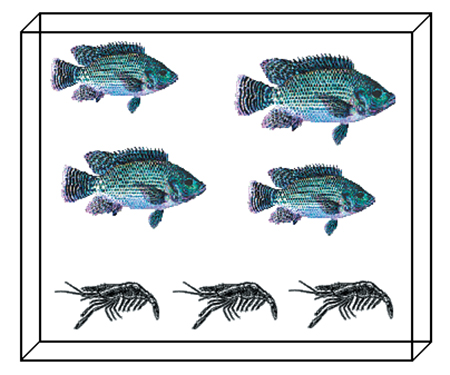
In simultaneous tilapia-shrimp polyculture, fish and shrimp are grown together in a pond or raceway that is managed for both animals. In sequential polyculture, the water is moved from one growing unit to another. In this case, the pond or raceway can be managed somewhat independently, with different feeds, harvest schedules, and even salinities.
The crop rotation approach alternates tilapia and shrimp in the same pond or raceway. Cage culture utilizes floating cages or hapa nets staked to the pond bottom. In the latter, tilapia are stocked and fed in the cages, while shrimp are stocked into the rest of the pond. A paddlewheel or other aerator keeps water moving through the cages.
In an extensive polyculture farm, tilapia can filter feed on phytoplankton and zooplankton in the upper water column. Shrimp spend most of the time near the pond bottom, grazing on bacterial films on the bottom substrate and detritus that settles from above. This detrital matter consists of dying algae cells and fecal matter from the tilapia.
In a more intensive farm that uses pelleted feeds, the tilapia monopolize the feed, especially if it is comprised of floating pellets. However, some feed particles always get to the bottom, where the shrimp get them.
Macrobrachium-tilapia polyculture reduces the yield of prawns compared to monoculture, but increases total yield of fish and prawns. Penaeid-tilapia polyculture seems to be subject to the same effect. Cage culture of tilapia, sequential polyculture, and crop rotation avoids the problem of fish and shrimp competing for the pelleted feed. In cage culture, the fecal matter from tilapia contributes to the detrital rain that provides a food source for shrimp.
Reduced effect of diseases
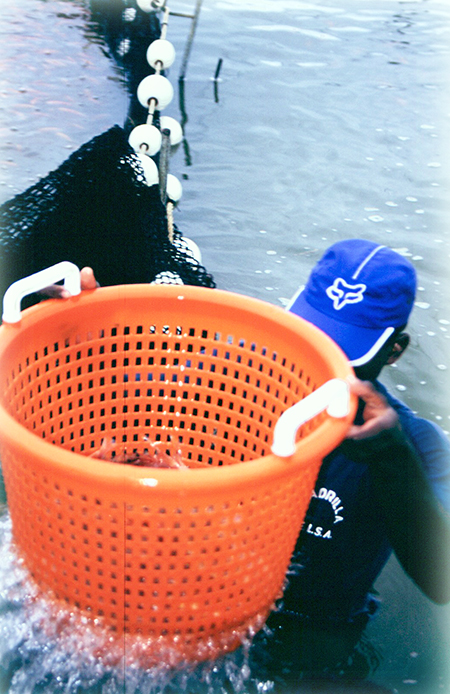
From the disease aspect, tilapia seem to provide advantages in several ways. Growers in Ecuador have reported that tilapia consume dead or moribund shrimp in polycultured ponds. Tilapia do not appear to be susceptible to or carriers of shrimp viruses. By disrupting shrimp cannibalism, the tilapia reduce its effect as a vector of disease transmission.
Tilapia also consume small crustaceans in shrimp ponds. These crustaceans are of concern as potential vectors. Having tilapia directly in the ponds or alternating with shrimp in a crop rotation can be effective way to reduce crustacean populations.
Bacterial infections also may be impacted by polyculture. Vibrio and most other bacterial pathogens common in shrimp culture are gram-negative, while waters that have been used for fish culture tend to be dominated by gram-positive bacteria. Using water from a fish pond seems to reduce the prevalence of bacterial infections in shrimp ponds.
Growers in Asia and South America have provided anecdotal reports that shrimp production increases due to higher survival in some of these polyculture systems. However, carefully controlled and replicated trials are needed to better study these systems and confirm the results.
Effect on pond conditions
Physical factors can also improve shrimp survival and growth in polyculture and crop rotations. For example, tilapia disturb bottom sediments more than shrimp, both in foraging and nest-building activities. This can be beneficial in several ways.
Disturbing the bottom improves oxidation of the substrate and interrupts the life cycles of shrimp patho-gens and parasites. It can also release nutrients into the water column that improve algae blooms. However, these activities can also be detrimental.
Disturbing bottom sediments can lower dissolved-oxygen levels, increase turbidity, reduce algae blooms, and most certainly increase the need to repair pond bottoms between crops. This final aspect will require careful experimentation to gain a full understanding of the tilapia activity.
Other considerations
The harvest of polyculture ponds presents several difficulties. Separating fish and shrimp grown together is time-consuming and requires graders or hand sorting. Netting fish from a pond before the shrimp harvest is difficult, because tilapia are adept at going over and under nets.
Processing is an area where polyculture shrimp producers can achieve synergies in some equipment and infrastructure, but additional investment is needed. Haulers, chill tanks, weighing tables, freezers and cold storage systems can be used for both shrimp and tilapia, but scalers, evisceraters, skinners and filleting equipment would need to be added.
Shrimp producers can build on their valuable connections to seafood brokers and buyers, but will need to make additional investment in marketing. Although demand for tilapia has been rising rapidly, tilapia production is increasing just as rapidly. Prices for tilapia products have decreased in many markets as supply increases. If additional products are to be brought in by shrimp farmers, substantial investments in market development should be made to protect prices from further erosion.
Conclusion
There are several places in the world that could benefit from shrimp-tilapia polyculture, but the growers must carefully consider the pros and cons. Part of the consideration is that aquaculture needs to focus on sustainable systems that are environmentally benign, but still profitable.
Polyculture or crop rotation of shrimp and tilapia may eventually develop into the modern equivalent of Chinese polyculture of carp. However, there are technical questions to be answered regarding optimal salinities, stocking densities, feeding rates, disease and parasite infestations, cost benefits, and environmental impacts.
(Editor’s Note: This article was originally published in the June 2001 print edition of the Global Aquaculture Advocate.)
Now that you've reached the end of the article ...
… please consider supporting GSA’s mission to advance responsible seafood practices through education, advocacy and third-party assurances. The Advocate aims to document the evolution of responsible seafood practices and share the expansive knowledge of our vast network of contributors.
By becoming a Global Seafood Alliance member, you’re ensuring that all of the pre-competitive work we do through member benefits, resources and events can continue. Individual membership costs just $50 a year.
Not a GSA member? Join us.
Author
Tagged With
Related Posts
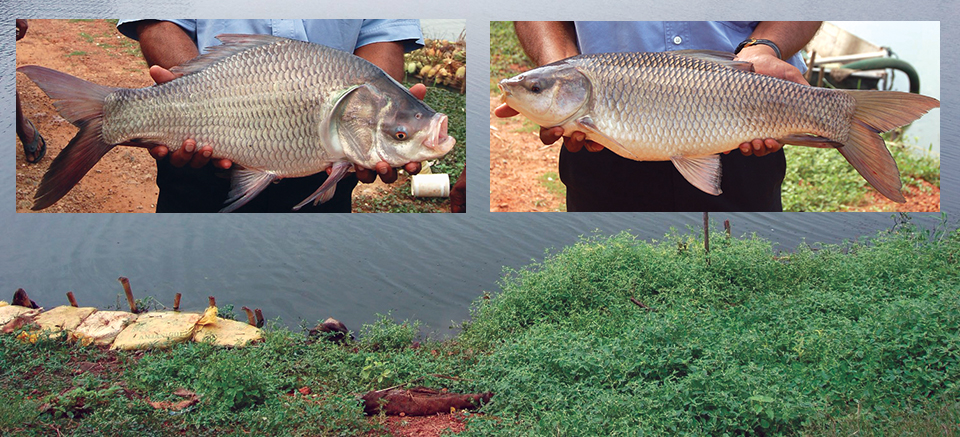
Responsibility
Carp polyculture in India
Carp polyculture with other species originally established through government projects has grown in India thanks to the application of advancing technologies and private financial investments.

Responsibility
A look at integrated multi-trophic aquaculture
In integrated multi-trophic aquaculture, farmers combine the cultivation of fed species such as finfish or shrimp with extractive seaweeds, aquatic plants and shellfish and other invertebrates that recapture organic and inorganic particulate nutrients for their growth.
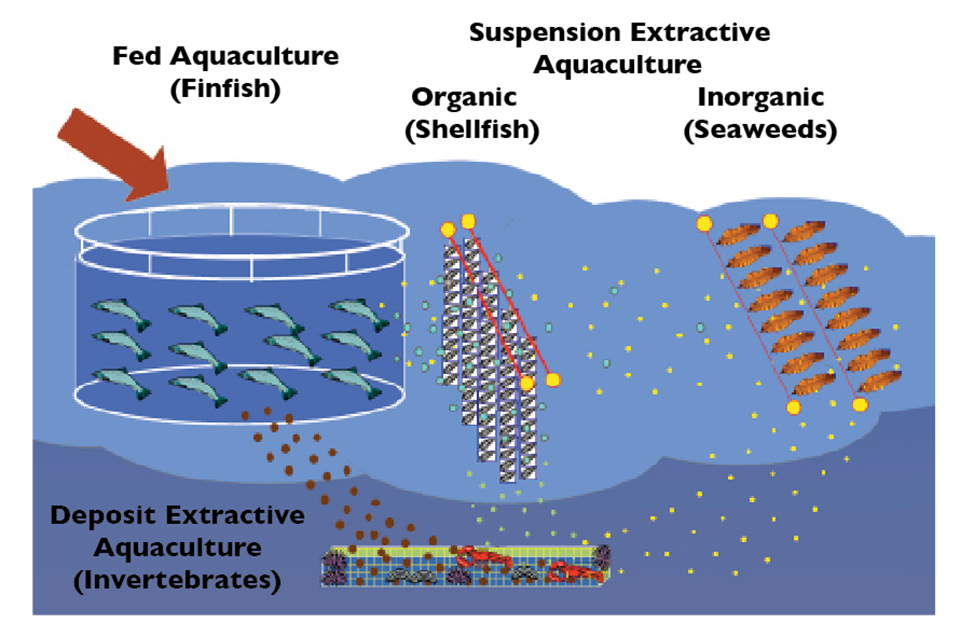
Responsibility
Integrated multi-trophic aquaculture, part 1
Integrated multi-trophic aquaculture involves cultivating fed species with extractive species that utilize inorganic and organic wastes for their growth.
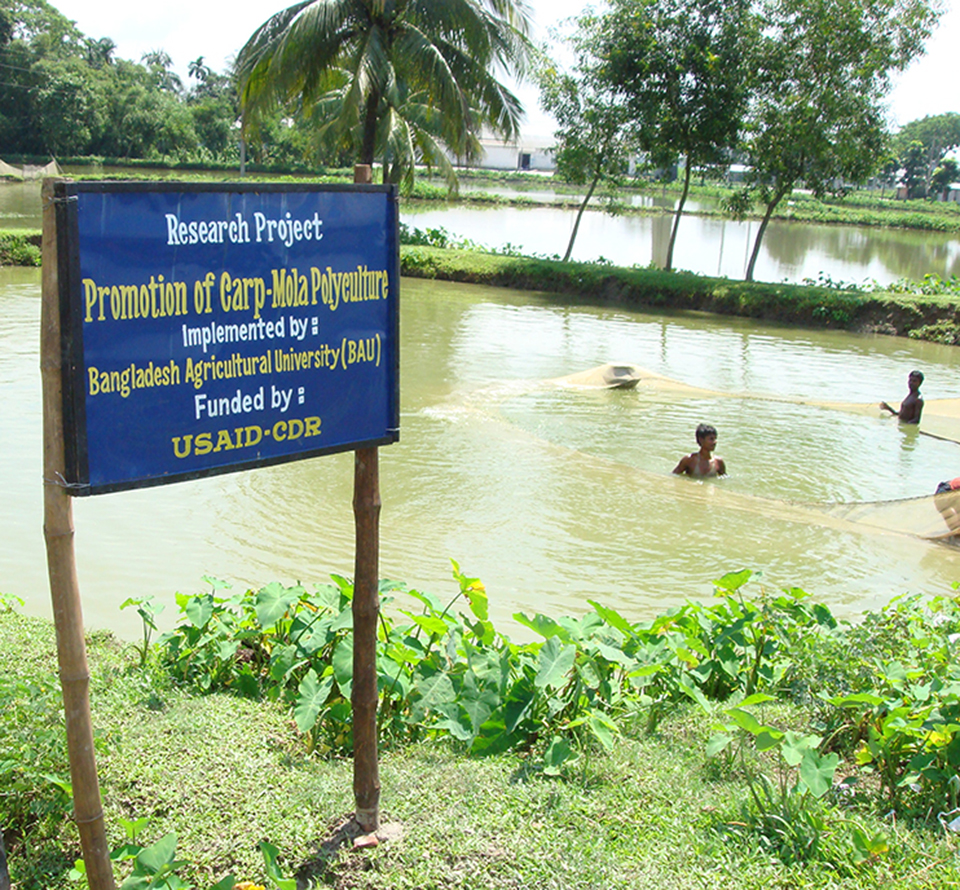
Responsibility
‘Cash-SIS’ culture yields money crop, family food
In a study of pond polyculture, manipulation of species composition improved fish yield and corresponding income. Selling the whole production increased income 27 percent.


